Vienna is the most central European capital and it seems a real giant on a background of small Austria. The Europeans rush there to invest, to move, to find a job or to enter in one of the world famous local universities. More than 70% of all investments in Austria are concentrated there and a square meter price has increased by 80% in the past 13 years, reaching the mark of €30,000 in the historical center.
In fact, average prices are, of course, much more democratic, even though the city is one of the most expensive capitals in Europe. Currently the average price of 1 sq. m of housing in Vienna is €3,900. But it all depends on the area. This is the price for a square in the new building with the average distance from the center, with developed infrastructure and located next to a metro station. Central areas are more expensive, and the blue collar suburbs are a little cheaper.
Social geography in rooms
At a first glance it seems that the plan of Vienna and its division on 23 areas has nothing common with a common sense: the old town is neighboring with the proletarian district; industrial areas are located close to the center, surrounded by the most expensive houses; and the 22nd, thrown on the other side of the Danube, for some reason is considered to be the residence of native Austrians. And top to all this leapfrog, the locals talk about their favorite places, carefully holding back the names, using only numbers and terms.
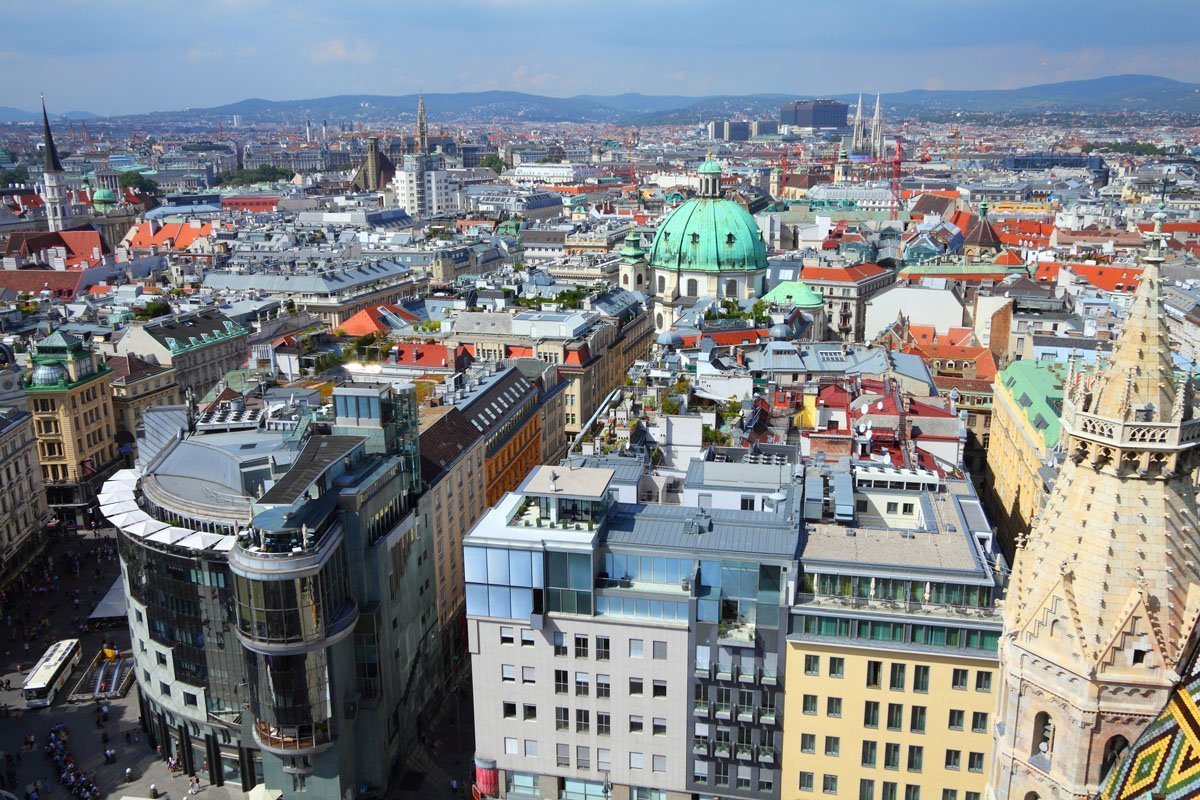
But the secret is simple: Vienna is unwound by spiral from the center to the outskirts, stringing lush baroque ensembles, Gothic monuments, parks, squares with fountains, Vienna Woods, finishing with the Danube ... and continuing behind it. Districts are calculated with pure German punctuality – from the center to the outskirts, and the number is the second, if not the main, name of each piece of the city. And if you start to explore the city searching for a roof over your head, everything will appear not so difficult.
The most prestigious and expensive districts are the 1st, the 13th, the 18th and the 19th. However, there is no greenery in the central 1st one. From this perspective, it makes sense to look closer to the Vienna Woods in the west: to the 13th, the 14th, the 17th, the 18th and the 19th districts. Many are fond of the 16th district, where the Ottakring cemetery begins and the whole town is spreading before your eyes.
The Most prestigious districts are the 10th, the 11th, the 15th and the 20th. However according to the old-timers, nice streets and decent apartment offers exist in all areas.
According to the Mercer Quality of Living Survey 2014, Vienna took the 1st place in the world for quality of life, gathering such epithets as "city comfortable to live in, green, compact and safe, where everything is close and accessible."
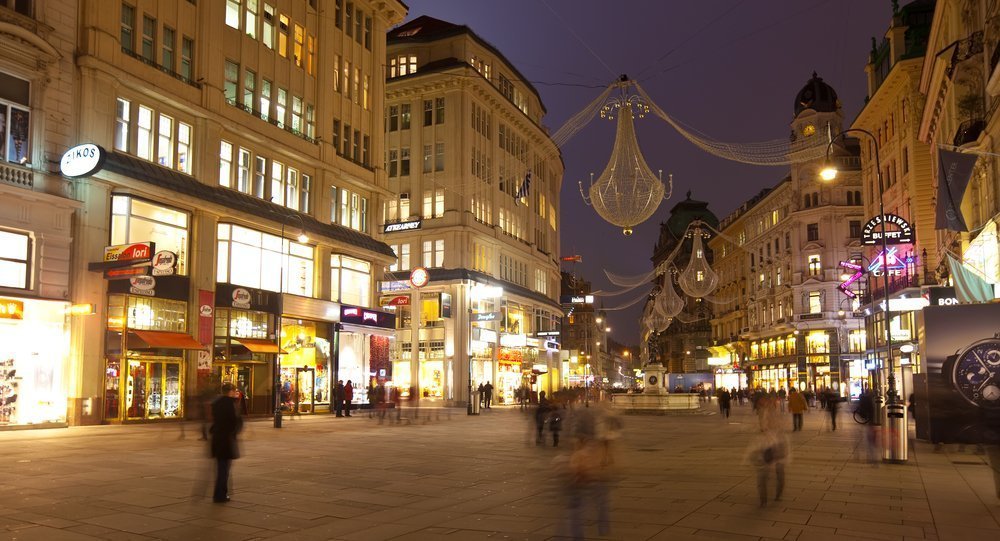
The fashionable center
As in most cities, having a long history, a plan of Vienna is a system of circumferential and radial streets. In the heart of it are the former imperial Hofburg Palace, the Cathedral of St. Stephen and Vienna State Opera. This Innere Stadt (the 1st district) or so called Inner City is the historic heart of the capital and center of the architectural masterpieces. It is in the inner city, if nowhere else, you feel the Viennese "imperial style" with its luxury, splendid buildings: the Parliament, the Town Hall and the new building of the University. Obviously, this is the most expensive area, where all the most of most is gathered: boutiques, restaurants, hotels, and of course, the most expensive apartments.
The real offer: a 2-bedroom apartment of 110 sq. m in old building near the Vienna State Opera is sold for €1.3 million. It is freshly renovated with huge, almost reaching the floor, French windows. Another option here: a furnished, fine finished and luxury decorated 8-bedroom apartment in a restored historical building, costs €5.5 million.
The Inner city is circled by the wide Ring Boulevard from almost all sides like a horseshoe. Streets fan with the richest Mariahilferstrasse, diverging from the Ring, leads to external semi-ring or a so-called Gürtel (belt). New residential neighborhoods are growing behind it.
On the 1st district are bordering 2nd Leopoldstadt district that is the place where the world-famous amusement Prater park is located and Wieden (the 4th district of Vienna) that is one of the most desirable places for those who is choosing his future address in Vienna. There modern residential complexes have risen among the historic buildings and the famous Karlsplatz square is in the middle. If you may find an elite apartment in the 1st district for €3-4 million, similar size and quality offer in Wieden will cost approx. €800,000.
Wealthy Vienna citizens also make a choice of luxury apartments in Josefstadt (8th). The smallest district of Vienna was named in honor of the Emperor Joseph II. Today it is a popular place to live as there have remained the majestic building of Baroque architecture and at the same time, there are beautiful parks, cozy cafes, and the oldest theater Josefstadt Theater.

To the blue-collar suburbs
The social contrasts in Vienna have been formed long ago and are clearly determined. The bourgeois and officials prefer to settle in the north-western outskirts of the city, at the foot of the Vienna Woods. Proletarian city districts are mainly the industrial south and east of the capital. Here is concentrated the lion's share of modern industry in the country – engineering, metalworking and electrical engineering enterprises, textile factories.
--------------------
"The social contrasts in Vienna have been formed long ago and are clearly determined"
--------------------
First and foremost this applies to the 11th Simmering district. Besides the well-defined industrial content, the road from the airport to the center of Vienna passes via this district. A similar situation is with the 12th Meidling district, stuffed with factories and inhabited by the blue collars. Residential complexes were built mostly between the two world wars and that is why so called experts say that comfort living is very relative there. Besides both proletarian areas, the 10th Favoriten is also uninviting for accommodation. Besides the fact that there also are industrial zones, this is the most populous district of the Austrian capital, the large Turks and Serbs Diasporas live here.
However, the German knowledge is needed to find sales offers in these places: such variants are little published in international sites, although the prices there are, of course, below the average city level. But it's not too much.
The 5th Margareten district may become a compromise for low budgets as it’s entirely a residential area, which has existed since 1861 and was completely rebuilt after the Second World War. Despite the fact that there exist several industrial complexes, the middle class has chosen it for living. Another inexpensive District is the 20th Brigittenau – the piece of urban environment with modest advantages and low architectural or cultural value. However, since the end of the last century, new construction has been booming there, so you can always find an inexpensive and functional apartment.
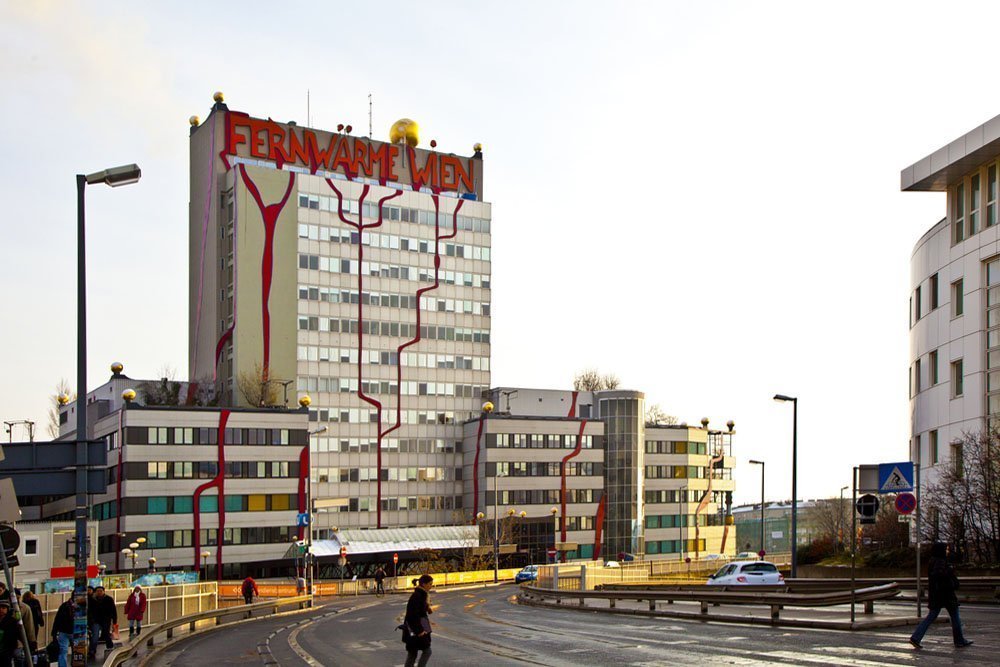
My address is not a house or a street
All this district classification seizes the minds of everyone who decides to buy an apartment in Vienna for own accommodation and for profit. In the first group usually get lucky, having got a job in the Austrian capital, or those who have entered in one of the local universities. In the second are the investors, who are recommended to have at least half a million euros – otherwise serious conversation will not work.
Experts believe that, strictly speaking, purchase of liquid and good for renting out option is possible in any district of Vienna. For the heart and soul having a relatively large budget are following areas: 13, 18, 19, and such neighborhoods as Klosterneuburg, Vaden and Perholdsdorf. For an average budget are 14, 17, 9, 2, 20, or in other words almost all except the first one. Any apartment will be renting out in any case, wherever it is located as its main address is Vienna.
Yet new projects are better to be looking for in the Landstraße (or the 3rd district) – the diplomatic quarter of the capital, which on the one hand, has preserved the imperial Viennese style (nevertheless, it border with the Inner City), and at the same time it’s stuffed with office centers, various modern residential complexes and is inhabited by immigrants from Eastern Europe and Asian countries.
--------------------
"Apartment will be renting out in any case, wherever it is as its main address is Vienna"
--------------------
The role of "non-prestigious center" may be performed by the 6th Mariahilf district. Nightlife and trendy art cafe lovers recommend the 7th Neubau. Interesting there may be considered apartments in the restored old houses. Alsergrund (the 9th district) is more suitable for students – it’s a real education center, also filled with relatively cheap housing; that is by Viennese standards, of course.
Prices go up again: 13th Hietzing district – residence of the half of the 19th century with green parks; 15th Rudolfsheim-Fünfhaus – a real abode of wealthy foreigners; the 16th Ottakring and the 17th Hernals – place for the trendiest new housing projects and shopping centers ...The rear of "prestigious and non-central" is bringing up by the 18th Währing – one of the most expensive. But of course, it is partially bordering upon the Vienna woods and partly is a part of it.
The real offer: new spacious 2-storeyed apartment with private garden, with area of 171 square meters and garden area of 308 square meters costs €745,000.
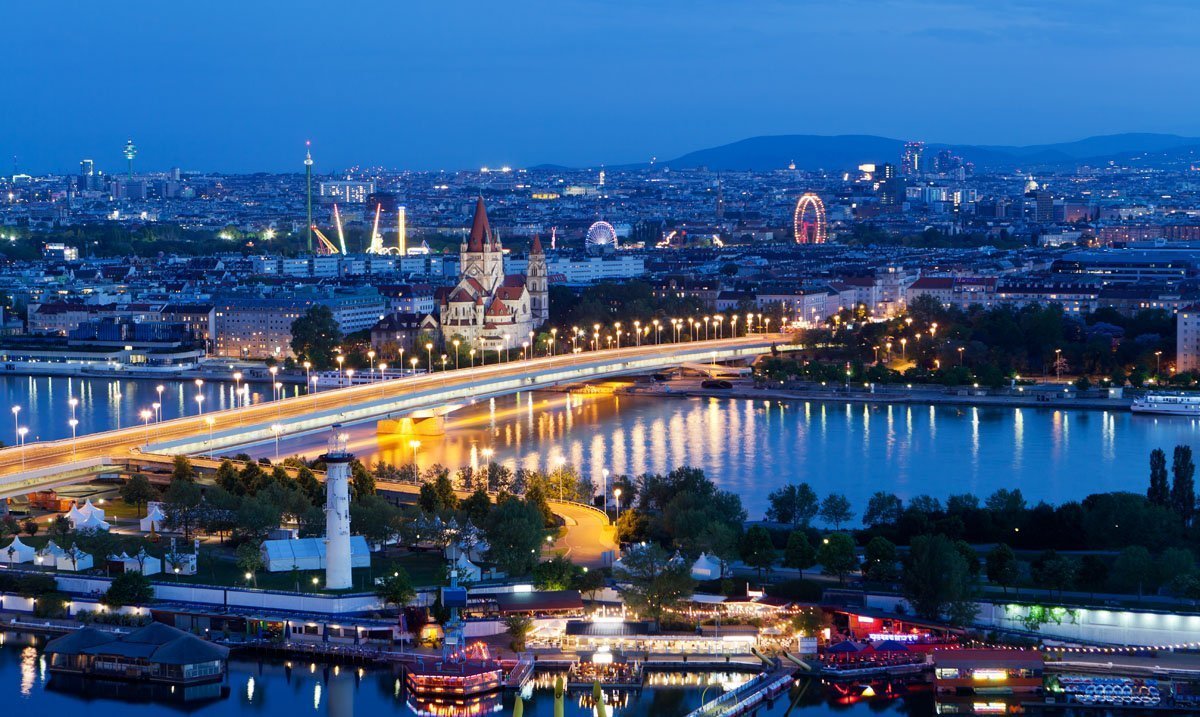
The suburbs keep its brand
The remaining five districts of Vienna are suburban, although officially, and in fact they are in the city. The Penzing (the 14th), the Döbling (the 19th), the Floridsdorf (the 21st), the Donaustadt (the 22nd) and the Liesing (the 23rd) are manors, homestead and vineyards, combining with modern low-rise apartment complexes. This suburban ring is chosen by natives, foreigners and investors for social homogeneity and pure Viennese solemnity. Prices for apartments here are on average higher than in the "non-prestigious center" – from €5000 per square meter. But villas predominate among the realtor’s real estate offers Russian buyers. The real deal: Two-storeyed villa of 500 sq. m with land plot of 2500 sq. m, located between the Danube and the Vienna Woods (the19th district). Sale price is €10 million.
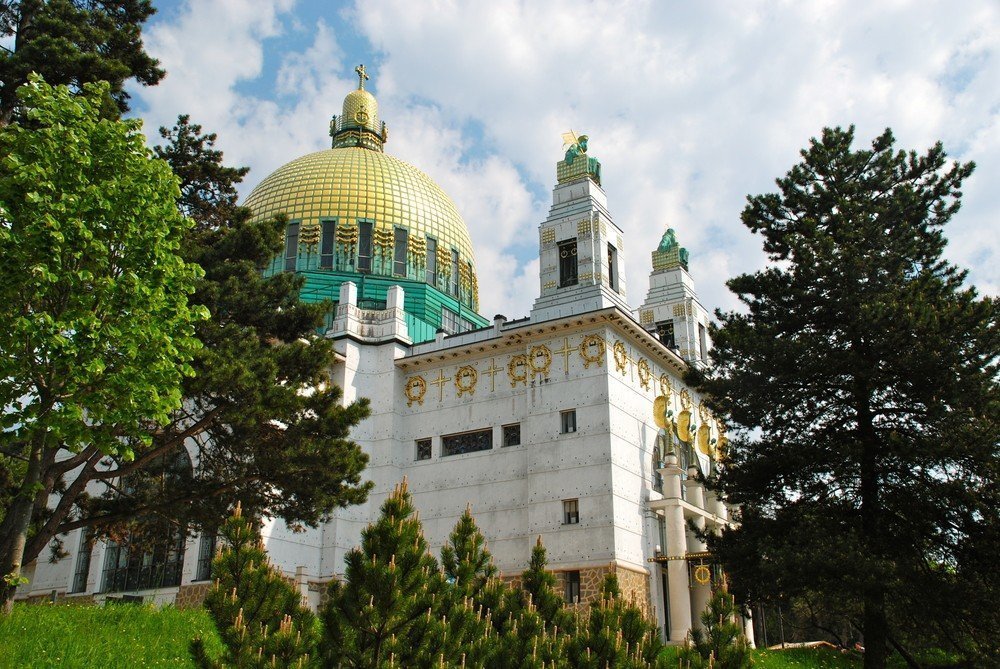
Kirche am Steinhof by Otto Wagner, Penzing, Vienna
By the way, according to statistics of Vienna realtors, the leaders of real estate purchasing in Vienna, especially in luxury housing, are the Germans, followed by Cypriots, then come the Russians, followed by Luxembourg.
Housing prices in Vienna has grown by an average of 5% per year in the last 10 years. The growth has slightly slowed this year. Realtors insist that it is good as speculative combinations are clipping and the market remains healthy. Stable market and the overall country economy ensure investment security.
Text: Julia Lozovskaya, especially for ee24.com